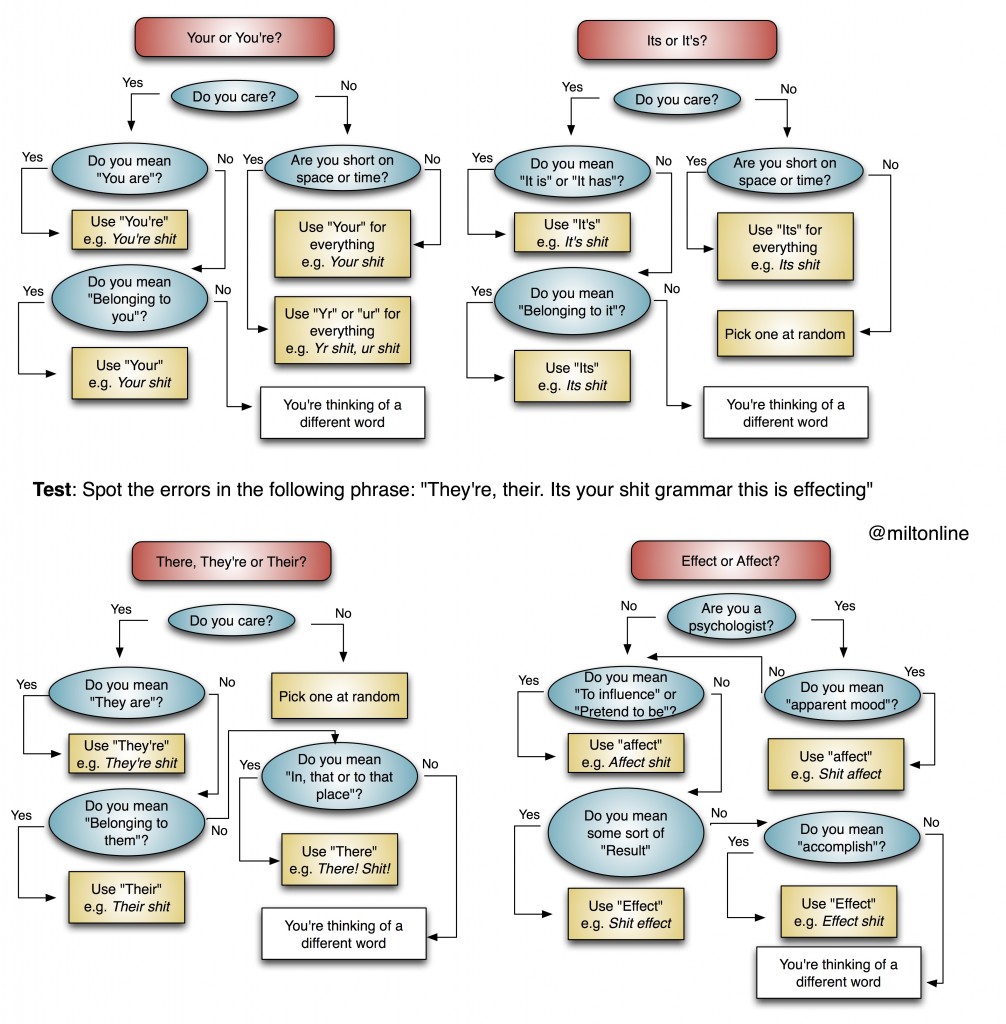Category: Writing
Writing
The solution to the PD/DA/PF puzzle.
Did you get it?
Milton Mermikides Research Seminar
Time-feel: the analysis, modeling and employment of sub-notational rhythmic expression
- Date:
- Tuesday 22 February 2011
- Time:
16:00 to 18:00
- Where?
- TB06
- Open to:
- Public, Staff, Students
The analysis and pedagogical focus of the jazz idiom has, historically, been largely limited to those musical features most easily described within the standard notational system. These aspects took precedence over the hugely important stylistic mechanisms of rhythmic expression that fall between the cracks of standard notation. However, with 1) the advent of digital audio analysis, 2) an increased willingness and ability of practitioners to articulate this aspect of performance and 3) a conceptual liberation from a quantized grid-view of rhythm, light has been shed on this poorly understood and yet “most basic fundamental element” (Crook 1991) of jazz and popular music virtuosity. Through the consolidation of practitioner-led research and pedagogy (Mingus, Crook, Bergonzi and Moore etc.), current analytical research (Benadon, Naveda et al, Gerischer and Friberg & Sundström etc.) and extensive use of precise digital audio analysis, this paper presents a relatively simple, powerful and usable model of expressive micro-timing in jazz and contemporary popular music, variously referred to as ‘swing’, ‘groove’ or ‘rhythmic feel’ and here collectively termed ‘time-feel’.
Central to the model is the conceptual separation of the mechanisms of swing (offset of the second quaver) from latency (the sub-notational rhythmic placement of an individual performance relative to a negotiated time-line). This separation reveals and makes quantifiable a wealth of expressive rhythmic mechanisms (dynamic swing-levels, time-line hierarchy, time-feel blocks, differential elasticity, hyper-latency, swing friction, ensemble swing, isoplacement, latency contours and temporal plasticity) lost to the discretely delineated rhythmic paradigm. Analytical methods are suggested that create useful comparisons of stylistic and performer-based variations, as well as how time-feel may be controlled dynamically during performance. A formal mathematical model, specifically written real-time software, graphic notation and digital audio techniques are presented which may be employed with great flexibility for analysis or as supporting mechanisms to performance, pedagogical practice and composition. In order to demonstrate the real-world relevance of this model, detailed analysis and commentary of precisely measured rhythmic data is also presented in case studies with a diverse range of artists including Django Reinhardt, Jimi Hendrix, Chuck Berry, Michael Jackson, Nick Mason (Pink Floyd) and a specifically commissioned recording session with Pat Martino.
Modal Interchange
Common modal interchange chords.
[scribd id=48706277 key=key-1wlqv6h66yf67alpbhhi mode=list]
Download now or listen on posterous
Download now or listen on posterous
1.24 Extract A clicks.mp3 (221 KB)
Download now or listen on posterous
1.25 Extract B.mp3 (506 KB)
Download now or listen on posterous
Simple? No. Don’t confuse accessible with simple. To really appreciate the harmony of the Beatles, Beck, Hancock, Gershwin and Stevie Wonder one needs as much understanding as that of ‘classical’ music harmony.
Well it is done. Submitted with minuscule (and astutely perceived) corrections. I started this beast not long before leukaemia diagnosis in 2004. So give that and the part-time nature, 2010 isn’t that bad, but I could have done better.
If you’d like to read it – you are most welcome – all feedback welcome. There are some parts I am quite proud of, and others that were useful learning experiences. Now it’s done, I feel I can start again – white belt.
[scribd id=46599058 key=key-1gxro6ow99v545wt07vd mode=book]
Amaz!ng
The James Randi Educational Foundation (JREF) – perhaps the greatest skeptical organization in the world, hold a kinda-annual conference called TAM – The Amaz!ng Metting. Past speakers have included Richard Dawkins, Penn & Teller, James Randi etc. Not big names to all, but big deal to me.
They are holding their first non-US meeting on October 3-4 2009 in…London.
Of course I rushed to buy tickets just 2 hours after the lines opened. But that was too late. Sold out.
So after a TAMtrum, I explored other avenues (begging, hassling, extortion – normal stuff) but to no avail.
However, I came across a scholarship competition, asking for essays (1,500 words max) from students (Check! Thanks to my laziness with PhD) 16 yr and older (Check!! By some margin) and on anything related to skeptical inquiry (CHECK!!!)
Me being me, I started the essay on the day of the deadline. I started at 10am, and had to leave for a friend’s wedding at noon, then straight on to another wedding gig 250 miles away. This was my only chance, and I hadn’t had my eggs or coffee. But I whipped something up and sent it to some dear people for proofreading while I set about my day. The excellent John Gregson took instructions while I drove up to my distant gig, eventually forwarding a pdf to me, which I relayed on to JREF with the last drops of my iPhone battery, and 12 minutes to spare.
Long story short.
I won.
So Bridge & I will be attending, the essay ‘A Life Examined’ will be published at TAM and online, and I will meet some wonderful people as a consequence.
Honoured & thrilled. and also for one grateful for my sloppiness: If I was more organized, I would have bought tickets sooner, If I was more dedicated I would no longer be a student (& ineligible) and if I had the luxury of time to write the essay, my self-doubt would have prevented me from finishing it. Yay for my imperfection.
I will of course tweet (@miltonline) & report back.
m
Spilling the Beans
My name is Milton and I’m a Coffee-holic. A big one. There I said it. I love the warm rush that calms yet inspires, I love anything from a black Americano to a Grande Semi-Wet Extra-Hot Semi-skimmed Cappucino. I love dreamily people-watching, and then excitedly making fix-my-life-to-do-lists in the after-glow of a perfect Latte. My latest blood test came out as a blend of O-negative, Robusta and Arabica.But it gets worse. Where do I go for my fix- almost daily?…Starbucks (shudder) There is a political reason I shouldn’t buy coffee there although those nice people at ‘Bucks have leaflets showing lots of happy people making my coffee in South America- so I don’t know who to believe. Anyway casting that hot potato aside, my biggest concern is the COST. Hey, I can afford it, I am a Jazz musician after all. But the huge mark-up just makes my principles quiver (not a pretty site) I calculated that the biggest mark up is in the ordering of a venti herbal tea- basically the loan of a mug (if you are lucky enough to be in when there are any ready) one teabag, no milk and some lukewarm water. It costs



